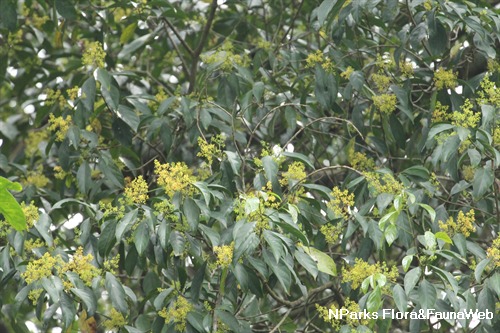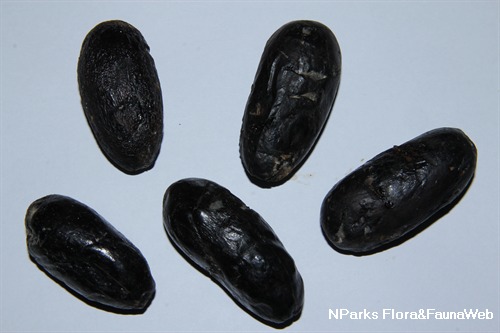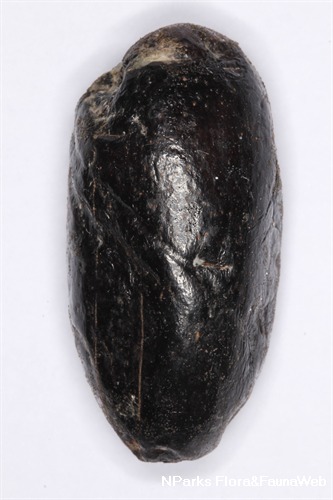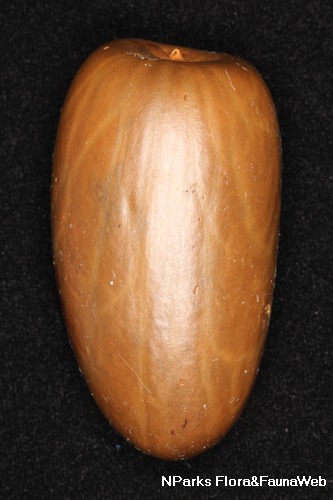_lowres.jpg)
Back
Nothaphoebe umbelliflora (Blume) Blume
| Family Name: | Lauraceae |
| Synonyms: | Aiouea malabonga Blanco, Alseodaphne malabonga (Blanco) Kosterm., Alseodaphne umbelliflora (Blume) Hook.f., Euphoebe umbelliflora (Blume) Meisn., Nothaphoebe malabonga (Blanco) Merr., Ocotea umbelliflora Blume, Phoebe umbelliflora (Blume) Nees |
| Common Name: | Medang Losa, Medang, Common False Laurel |
Name
Classifications and Characteristics
| Plant Division | Angiosperms (Flowering Seed Plants) (Dicotyledon) |
|---|---|
| Plant Growth Form | Tree (Big (>30m)) |
| Lifespan (in Singapore) | Perennial |
| Mode of Nutrition | Autotrophic |
| Plant Shape | Irregular |
| Maximum Height | 33 m |
Biogeography
| Native Distribution | Sumatra, Peninsular Malaysia, Singapore, Bangka Island, Borneo, and Java |
|---|---|
| Native Habitat | Terrestrial (Primary Rainforest, Mountain, Freshwater Swamp Forest) |
| Preferred Climate Zone | Tropical |
| Local Conservation Status | Native to Singapore (Least Concern (LC)) |
Description and Ethnobotany
| Growth Form | It is a tree up to 33 m tall. |
|---|---|
| Foliage | Its alternate, subopposite, or opposite stalked leaves have leathery leaf blades that are oval to oblong or drop-shaped, 6–17 by 2–6 cm, and with tapered and sometimes asymmetrical bases. |
| Flowers | Its flowers are yellow, covered with hair, and found in clustered in much-branched shoots at the leaf axils. |
| Fruit | Its oblong fruits are 3 by 1 cm when dry, shiny green to reddish or black when ripe, and have pink stalks. |
| Habitat | It grows in lowland to montane forests up to 1200 m altitude. |
| Associated Fauna | Its flowers are insect-pollinated. Its fruits are possibly eaten by small mammals. |
| Cultivation | It can be propagated by seed. |
| Etymology | Greek nothos, false; phoebe, genus of Lauraceae, referring to the close resemblance to the genus Phoebe; Latin umbellatus, furnished with an umbel where all the flower stalks arise from the same point, referring to the flowering shoot |
| Ethnobotanical Uses | Timber & Products: The wood is used for constructing houses. |
Landscaping Features
| Landscaping | It is can be planted in parks. |
|---|---|
| Landscape Uses | Parks & Gardens |
| Usage Hazard - Cons Remarks | The bark contains a poisonous alkaloid, laurotetanine. |
Fauna, Pollination and Dispersal
| Pollination Method(s) | Biotic (Fauna) |
|---|---|
| Seed or Spore Dispersal | Biotic (Fauna) |
Plant Care and Propagation
| Light Preference | Full Sun |
|---|---|
| Water Preference | Moderate Water |
| Plant Growth Rate | Moderate |
| Rootzone Tolerance | Moist Soils, Well-Drained Soils, Fertile Loamy Soils |
| Propagation Method | Seed |
Foliar
| Foliage Retention | Evergreen |
|---|---|
| Mature Foliage Colour(s) | Green |
| Mature Foliage Texture(s) | Leathery |
| Foliar Type | Simple / Unifoliate |
| Foliar Arrangement Along Stem | Alternate, Opposite |
| Foliar Attachment to Stem | Petiolate |
| Foliar Shape(s) | Non-Palm Foliage (Obovate, Oval, Oblong) |
| Foliar Venation | Pinnate / Net |
| Foliar Margin | Entire |
Floral (Angiosperm)
| Flower & Plant Sexuality | Bisexual Flowers |
| Flower Colour(s) | Yellow / Golden |
|---|---|
| Flower Grouping | Cluster / Inflorescence |
| Flower Location | Axillary |
Fruit, Seed and Spore
| Mature Fruit Colour(s) | Black, Green, Red |
|---|---|
| Mature Fruit Texture(s) | Glossy / Shiny |
| Fruit Classification | Simple Fruit |
| Fruit Type |
Image Repository
Others
| Master ID | 30180 |
|---|---|
| Species ID | 4489 |
| Flora Disclaimer | The information in this website has been compiled from reliable sources, such as reference works on medicinal plants. It is not a substitute for medical advice or treatment and NParks does not purport to provide any medical advice. Readers should always consult his/her physician before using or consuming a plant for medicinal purposes. |


_lowres.jpg)
_lowres.jpg)

_lowres.jpg)
_lowres.jpg)
_lowres.jpg)



